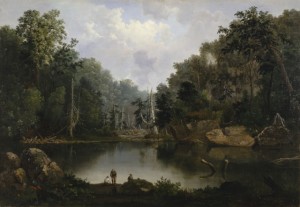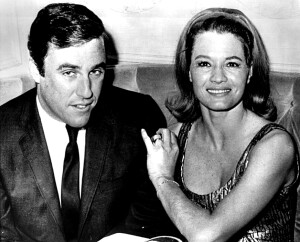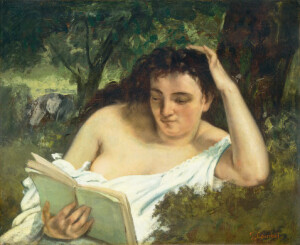No, it’s not what you think. The king isn’t the new one but the first of his name, who lost his head in 1649. And Mr. Dick isn’t some louche character in a Henry Miller novel. He is, well, Dickensian.
Mr. Dick is one of those irresistible minor characters in “David Copperfield”, the 1850 novel by Charles Dickens. Unlike Uriah Heap, a better-known minor character in the book, his name was not glamorized by a 1970s arena rock band.
Mr. Dick lives with David Copperfield’s Great Aunt Betsy in a cottage on the cliffs of Dover. You might say he is as mad as a hatter. Aunt Betsy will hear none of it. She won’t even utter the euphemism “a bit eccentric” to describe his state of mind. She defends him fiercely, knowing the anguish that made him that way. She provides the same refuge to David at a crucial moment in his youth.
Mr. Dick spends his days writing in his room. He is drafting a “Memorial” about the injustices levied on him by his mean-spirited family. Sometime every day, King Charles I creeps into his head. Mr. Dick knows the troubles with the king’s own head — crowned, beheaded, sewn together again — have something to do with his confusion. He can’t figure it out or let it go, so he stops writing and throws the day’s work in a corner. As the pages pile up, he glues them into a giant kite, more than seven feet tall. He hopes that flying it will disperse his troubled thoughts across the sky.
![This book illustration from a 19th-century edition of David Copperfield depicts an amiable conversation between Mr. Dick and David (left). Both are seated. A stout older man, Mr. Dick folds his hands thoughtfully. A young boy, David listens attentively. The illustration was drawn by Fred Barnard. [Source: Wikipedia]](https://www.ghostturtles.com/wp-content/uploads/2023/05/Mr_Dick-wikipedia-050223-300x248.png) David remembers wistfully, “Every day of his life he had a long sitting at the Memorial, which never made the least progress, however hard he labored, for King Charles the First always strayed into it, sooner or later, and then it was thrown aside, and another one begun. The patience and hope with which he bore these perpetual disappointments, the mild perception he had that there was something wrong about King Charles the First, the feeble efforts he made to keep him out, and the certainty with which he came in, and tumbled the Memorial out of all shape, made, a deep impression on me. What Mr. Dick supposed would come of the Memorial, if it were completed; where he thought it was to go, or what he thought it was to do; he knew no more than anybody else, I believe. Nor was it at all necessary that he should trouble himself with such questions, for if anything were certain under the sun, it was certain that the Memorial never would be finished.
David remembers wistfully, “Every day of his life he had a long sitting at the Memorial, which never made the least progress, however hard he labored, for King Charles the First always strayed into it, sooner or later, and then it was thrown aside, and another one begun. The patience and hope with which he bore these perpetual disappointments, the mild perception he had that there was something wrong about King Charles the First, the feeble efforts he made to keep him out, and the certainty with which he came in, and tumbled the Memorial out of all shape, made, a deep impression on me. What Mr. Dick supposed would come of the Memorial, if it were completed; where he thought it was to go, or what he thought it was to do; he knew no more than anybody else, I believe. Nor was it at all necessary that he should trouble himself with such questions, for if anything were certain under the sun, it was certain that the Memorial never would be finished.
“It was quite an affecting sight, I used to think, to see him with the kite when it was up a great height in the air. What he had told me, in his room, about his belief in its disseminating the statements pasted on it, which were nothing but old leaves of abortive Memorials, might have been a fancy with him sometimes; but not when he was out, looking up at the kite in the sky, and feeling it pull and tug at his hand. He never looked so serene as he did then. I used to fancy, as I sat by him of an evening, on a green slope, and saw him watch the kite high in the quiet air, that it lifted his mind out of its confusion, and bore it (such was my boyish thought) into the skies. As he wound the string in, and it came lower and down out of the beautiful light, until it fluttered to the ground, and lay there like a dead thing, he seemed to wake gradually out of a dream; and I remember to have seen him take it up, and look about him in a lost way, as if they had both come down together, so that I pitied him with all my heart.”
If you went to junior high school in Ohio in the 1960s, you probably read, or claimed to have read, a Dickens novel. I had to read Great Expectations and I hated it. At age 15 I decided life was too short for the novels of Charles Dickens. I needed 50 years to change my mind. If the assigned reading had been “David Copperfield”, things might have turned out differently.
Or not. I had not lived long enough to really understand it. I had not yet written enough misbegotten words. And I never was any good at flying a kite.
About THE Images: (above) A large crowd gathers outside the Banqueting House, Whitehall Palace to witness King Charles I’s public beheading in 1649. The illustration is based on a contemporary 17th-century German print. [Source: Wikipedia] (below)This book illustration from a 19th-century edition of David Copperfield depicts an amiable conversation between Mr. Dick and David (left). Both are seated. A stout older man, Mr. Dick folds his hands thoughtfully. A young boy, David listens attentively. The illustration was drawn by Fred Barnard. [Source: Wikipedia]
![A large crowd gathers outside the Banqueting House, Whitehall Palace to witness King Charles I's public beheading in 1649. The illustration is based on a contemporary 17th-century German print. [Source: Wikipedia]](https://www.ghostturtles.com/wp-content/uploads/2023/05/Execution_of_King_Charles_I_from_NPG-1024x902.jpg)


![Sandhill cranes land on Platte River sandbar roosts west of Rowe Sanctuary’s Iain Nicolson Audubon Center southwest of Gibbon, Nebraska. [Photo by Lori Porter| Kearney Hub]](https://www.ghostturtles.com/wp-content/uploads/2015/03/sandhill_cranes_kearneyhub_032015-300x225.jpg)
![An endangered Whooping crane takes flight. Yhe large bird has a 7-foot wingspan. It is all white except for black wing tips and face markings. In this photo its long neck stretches forward; its wings sweep upward; and its black legs trail straight behind it. [Source: International Crane Foundation]](https://www.ghostturtles.com/wp-content/uploads/2023/03/Whooping-crane-eastern-ICF-080622-300x157.jpg)

![Mark Willis peruses a 1745 volume by Voltaire at a bouquiniste book stall on the banks of the Seine in Paris. He wears a brown leather jacket and checkered flat cap. He holds the open book in his hands. Rows of old books are seen on shelves behind him. [2005 photo by Ms. Modigliani]](https://www.ghostturtles.com/wp-content/uploads/2023/03/mw_bouquiniste_05-300x225.jpg)


